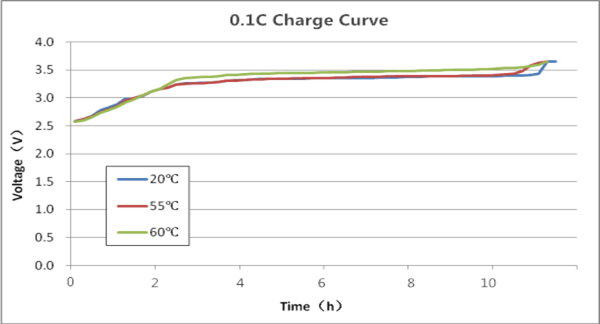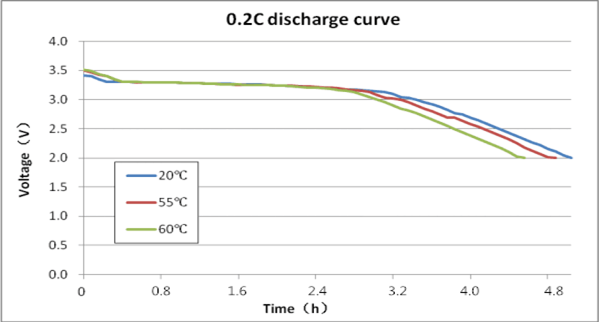Godson Technology Co., Ltd |
|
Verified Suppliers
|
|
14500 600mAh 3.2V LiFePO4 Battery for Emergency Lights & Exit
Signs
LiFePO4 Rechargeable Battery 3.2V 600mAh
| Pos. | Product Parameters | Data |
| 1 | Standard Charge Mode | CC/CV |
| 2 | Cycle Life | ≥2000 times |
| 3 | Operating Temperature | Charge:(0℃)-(45℃) Discharge(-20℃) - (+60℃) Storage Temperature: (-20℃) - (+50℃) |
| 4 | Expected Life | 10 years |
| 5 | Packaging | Standard export package or customized package |
List Of LiFeO4 High Temperature Cells
| Type | Diemeter (mm) | Height (mm) | Voltage (V) | Capacity (mAh) | Operating Temperature (°C) |
| IFR14500 | 14.5 | 50.5 | 3.2 | 500 | -20 to 60 |
| IFR14500 | 14.5 | 50.5 | 3.2 | 550 | -20 to 60 |
| IFR14500 | 14.5 | 50.5 | 3.2 | 600 | -20 to 60 |
| IFR18500 | 18.5 | 50.5 | 3.2 | 1000 | -20 to 60 |
| IFR18650 | 18.5 | 65.5 | 3.2 | 1400 | -20 to 60 |
| IFR18650 | 18.5 | 65.5 | 3.2 | 1500 | -20 to 60 |
| IFR22650 | 22.5 | 65.5 | 3.2 | 2000 | -20 to 60 |
| IFR26650 | 26.5 | 65.5 | 3.2 | 3000 | -20 to 60 |
| IFR26650 | 26.5 | 65.5 | 3.2 | 3300 | -20 to 60 |
| IFR26650 | 26.5 | 65.5 | 3.2 | 3400 | -20 to 60 |
Feature Of Lifepo4 Battery:
1. Superior Safety: Lithium Iron Phosphate chemistry eliminates the risk of explosion or combustion due to high impact overcharging or short circuit situation.
2. High power: Delivers twice power of lead acid battery, even high discharge rate, while maintaining high energy capacity wider temperature range: -20℃~60℃.
3. Long cycle life: offers up to 20 times longer cycle life and 5 times longer/calendar life the lead acid battery, helping to minimize replacement cost and reduce total cost of ownership.
4. Lighter weight: About 40% of the weight of a comparable lead acid battery. A “dron in”replacement for lead acid batteries.
5. Superior Safety: Lithium Iron Phosphate chemistry eliminates the risk of explosion or combustion due to high impact, overcharging or short circuit situation.
6. Increased Flexibility: Modular Design enables deployment of up to up to ten battery in parallel.
Performance Curves of LiFePO4 Cell:
1. LiFePO4 Cell Charge Curve (Charge at 0.1C)

2. LiFePO4 Cell Discharge Curve (Discharge at 0.2C )

3. LiFePO4 Cell Charge Efficiency At Different Temperature

4. LiFePO4 Cell Cycle Life Curve

5. LiFePO4 Cell Capacity Change At Smart Floating Charge At 55 degree

Lithium iron phosphate (LiFePO4 or LFP) is very suitable for emergency lighting. Compared with alternatives such as nickel cadmium (NiCd) and nickel metal hydride (NiMH), lithium iron phosphate (LFP) batteries have the following advantages:
LFP is more effective than NiCd in two ways.
During the charging process of any battery, energy is lost in the form of heat. When using LFP, the charging efficiency is very high, about 95%. When using NiCd, the charging efficiency is also very high, but it is limited to the early stage of charging. Once the battery reaches 70% of its capacity, it will begin to generate heat and the charging efficiency will drop to 85%. This is very important, because under normal use,the NiCd battery in the emergency light accessory will be charged continuously with trickle current to maintain its nearly 100% capacity.
All rechargeable batteries lose charge over time, but when using LFP, the monthly charge rate is only 3-5%. NiCd loses 15% in the first 24 hours, and thereafter drops by 10-20% every month (depending on temperature). As a result, the charger in the emergency device equipped with NiCd or NiMH batteries works almost continuously, while the charger in the LFP circuit works with low current in short-time and infrequent emergencies.
LFP batteries have little memory effect so their performance remains almost constant till they reach end of life, usually defined as 70% of rated capacity. Typically, an LFP battery will have a life of 8-10 years.
The performance (power storage) of NiCd and NiMH declines rapidly with every charge/discharge cycle, so they typically need to be changed after 3 or 4 years. The routine testing of emergency lighting required by BS 5266 contributes to shortening the life of NiCd batteries. It is also common for NiCd batteries in new-build projects to fail in their first year of life if they have been fully installed in the construction phase when the mains power would normally be switched off completely overnight. The resulting nightly discharge and daily re-charge degrades the NiCd batteries to the point that they can be due for replacement withing the first year of occupation.
